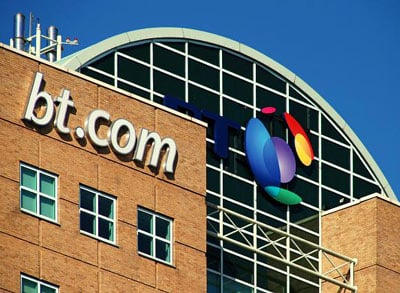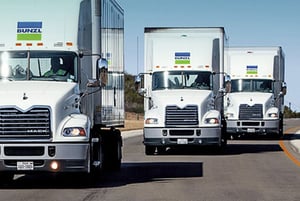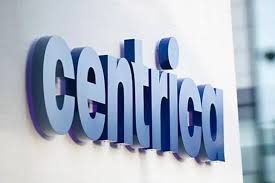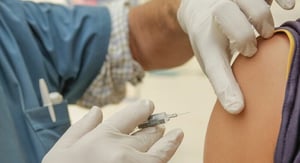BT Group plc (LON:BT.A) has announced its results for the full year to 31 March 2025
Allison Kirkby, Chief Executive, commenting on the results, said
“BT Group delivered strong progress against its strategic priorities in FY25, as we stepped up the pace of build of the UK’s leading next generation networks. We set new record build and connect highs: our full fibre network now reaches more than 18m homes and businesses, with more than 6.5m already connected, and we were awarded the country’s best mobile network for the 11th year in a row recognising EE’s clear leadership in 5G. We also accelerated the pace of simplification and transformation, agreeing asset sales, improving customer satisfaction across all of our brands and business segments, and delivering over £900m of annualised cost savings.
“Although revenue declined year-on-year driven mainly by lower international sales and handsets, strong cost control and a step-up in focus and transformation resulted in growth in both EBITDA and normalised free cash flow, allowing us to increase our dividend for FY25 by 2% to 8.16p per share.
“The momentum in, and impact of, our full fibre programme is such that we are now raising our build target by 20% to up to 5m UK premises in FY26, keeping us comfortably on track to reach 25m by the end of 2026, while maintaining our cash flow guidance. We are now only one year away from our inflection to £2bn of normalised free cash flow, our target for FY27, and remain on track to deliver £3bn by the end of the decade.
“With the leadership team now in place to take our strategy forward, I am confident that as we build and connect at pace, our transformation will accelerate and deliver a better BT for all of us – our customers, our colleagues, the country and our owners.”
Strong delivery against our strategy
• Record FTTP build of 4.3m premises passed in the year; FTTP footprint reached more than 18m premises, of which 4.9m in rural locations
• Record demand for Openreach FTTP with quarterly net adds above 500k for the first time; total premises connected over 6.5m, increasing our market-leading take up rate to 36%; Openreach broadband ARPU in the year grew by 6% to £16.0, driven by higher FTTP take-up, speed mix and CPI
• Openreach broadband lines fell 243k in Q4, driven by losses to competitors and a weaker broadband market; expect the H2 run rate to continue through FY26
• New FTTP build target of up to 5m announced for FY26, to accelerate FTTP benefits including take-up and underpinning the December 2026 target of 25m
• UK’s best mobile network for the eleventh consecutive year as awarded by RootMetrics; tenth year of best network with umlaut connect; best 5G availability with speedtest; 5G standalone rolled out across 50 major UK towns and cities, covering over 40% of the population
• Retail FTTP base grew by 33% year-on-year to 3.4m, of which Consumer was 3.2m and Business was 0.2m; 5G base reached 13.2m, up 15% year-on-year
• Consumer customer bases relatively stable in the year with a return to growth in the broadband base in Q4; Consumer broadband ARPU1 up 2.4% year-on-year to £42.2; Consumer postpaid mobile ARPU1 £19.4 in line year-on-year; Consumer fixed and mobile convergence grew to 24.6% from 22.9% last year
• Business continued to refocus on the UK with disposals of operations in Ireland and, after the period end, Italy; the Emergency Services Network contract was secured for another seven years
• Transformation delivering ahead of plan with £913m of gross annualised cost savings during FY25 at a cost to achieve in line with our plan of £448m; energy usage in our networks was down 4% and total labour resource was down 3% to 116k; we achieved a 10% reduction in Openreach repair volumes
• BT Group NPS improved to 29.5, up 4.7pts year-on-year, demonstrating further improving customer experience across all three customer facing units
Continued EBITDA growth in FY25 and normalised free cash flow2 ahead of guidance
• Reported and adjusted2 revenue £20.4bn, down 2%, mainly due to continued challenging trading conditions in our Global and non-UK Portfolio channels and weaker handset trading in Consumer, offsetting the benefit of FTTP growth in Openreach and price increases; Adjusted UK service revenue2 £15.6bn, down 1%, largely due to legacy voice declines
• Adjusted2 EBITDA £8.2bn, up 1%, driven by strong cost transformation
• Reported profit before tax £1.3bn, up 12%, primarily due to goodwill impairment in the prior year, offset by higher specific costs and net finance expense
• Capital expenditure2 (‘capex’) £4.9bn broadly in line with the prior year
• Net cash inflow from operating activities £7.0bn; normalised free cash flow2 £1.6bn, up 25% due to higher EBITDA and a lower working capital outflow
• Net debt £19.8bn (31 March 2024: £19.5bn), increased mainly due to our scheduled pension scheme contributions of £0.8bn partly offset by free cash flow
• Gross IAS 19 pension deficit of £4.1bn, a decrease from £4.8bn at 31 March 2024 mainly due to scheduled contributions
• Final dividend of 5.76 pence per share (pps) up from 5.69pps, bringing the full year dividend to 8.16pps, up 2%
• FY26 Outlook: Adjusted2 group revenue c£20bn and adjusted2 UK service revenue of £15.3-£15.6bn and EBITDA of £8.2-8.3bn; capital expenditure excluding spectrum c. £5.0bn; normalised free cash flow2 c. £1.5bn
• Mid-term guidance: Adjusted2 group revenue and adjusted2 UK service revenue sustained growth from FY27 and EBITDA growth ahead of revenue, enhanced by cost transformation; capital expenditure excluding spectrum reducing by more than £1bn from FY26 level; normalised free cash flow2 of c. £2.0bn in FY27 and c. £3.0bn by the end of the decade
1 Consumer have reassessed the treatment of EE One and more specifically the standalone selling price of each good and service provided to the customer under the converged offering, and as such the allocation of the total transaction price to be received under the contract to each distinct product. This has resulted in a reclassification of revenues between product types.
2 See Glossary on page 8.









































